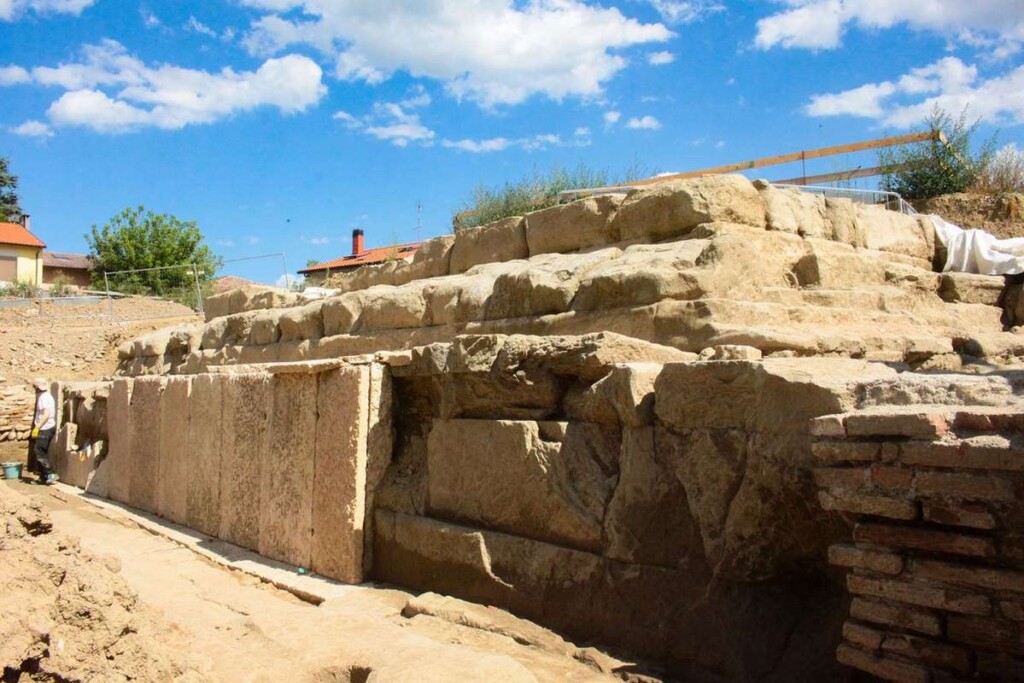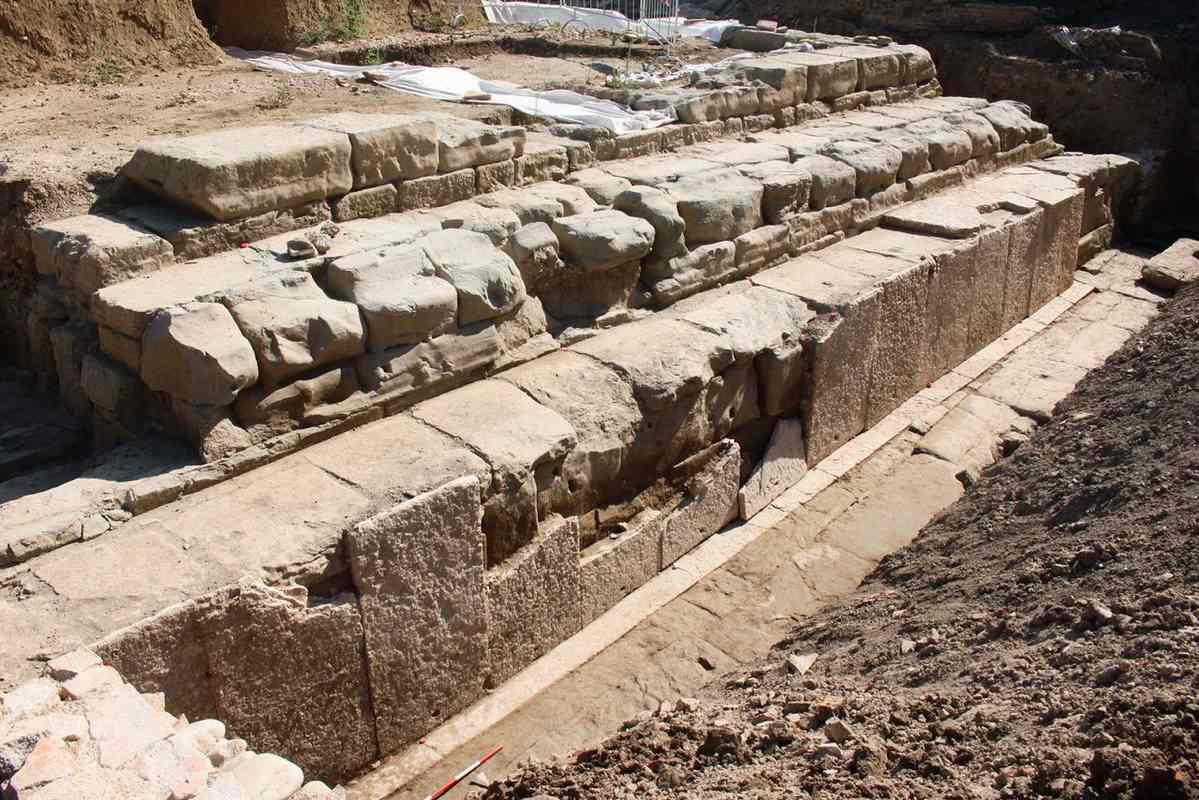
While unquestionably quaint and surrounded by gorgeous scenery, Sarsina in Italy’s Emilia Romagna region has never been accustomed to drawing in hordes of tourists.
When it formed part of Rome’s defensive perimeter, it was once a fortified outpost at a strategic mountain pass, and also birthed the famous Roman playwright Plautus.
Little if nothing of that heritage remains today however, and the sleepy town of 3,000 was all set to welcome a new sports complex and supermarket when groundbreakers intending to lay the foundation stumbled upon an ‘extremely rare’ relic of Republican Rome, and returned a spotlight to Sarsina for the first time in almost 2,000 years.
A pagan-Roman temple, known as a Capitolium, dedicated to Jupiter, Minvera, and Juno has Roman researchers very excited, as it’s very well preserved and dates back to the last century BCE.
At 6,200 square feet (577 square meters) in size, the sandstone and limestone blocks that make up its foundation and podium still remain in a state of preservation typical of Roman monumental architecture.
“We have unearthed three separate rooms, likely dedicated to the triad of gods Jupiter, Juno and Minerva,” lead archaeologist at the excavation site Romina Pirraglia told CNN.

“The excavations are still underway… and we have already identified an older, deeper layer of ruins dating back to the 4th century BC, when the Umbrian people (an ancient Italic tribe who predated the Romans) lived in the area. The entire temple could be even larger than what we now see.”
MORE ROME STORIES: The Only Piece of Roman Pottery Inscribed with Poet Virgil’s Verse Discovered
Federica Gonzato, superintendent of fine arts, archaeology, and landscapes for the provinces of Ravenna, Rimini, and Forlì-Cesena in eastern Emilia Romagna, described the temple as “extremely rare” and said there will undoubtedly be space for shopping and recreation, but the existing plans will have to be changed to preserve this glorious monument.
“The marvelous quality of the stones has been spared from sacks, enemy invasions, and plunders across millennia thanks to the remote location of Sarsina, a quiet spot distant from larger cities,” Gonzato told CNN. “Temples such as this one (were) regularly plundered, exploited as quarries with stones and marble slabs taken away to be re-used to build new homes.”
MORE ROMAN DISCOVERIES: 2,000-year-old Roman House Uncovered in Malta Reveals Ancient History of Wealthy Society
Gonzato said that the seemingly endless discovery of new ancient buildings and treasures is part of what makes Italy so special. In nearby Ravenna, the Umbri were incorporated as Italian tribal allies of the Roman Republic in 89 BCE, and it was from that city that Julius Caesar marshaled his forces and crossed the Rubicon creek on his march to Roman dictatorship.
It was also the capital of the Western Roman Empire after Rome itself had been sacked. It’s likely that plenty of secrets still lie underground in the area.
SHARE This Amazing Roman-Era Discovery With Your Friends…




















